Bakers are well placed to embrace Brits’ growing appetite for luxury and more indulgent biscuits & cookies, as on-the-go eating and snacking trends, say experts
Want to be a smart cookie? It’s all about quality over value in the biscuit aisle.
While sales of more indulgent, treat-style biscuits are in growth, value sales of everyday biscuits such as digestives or rich tea have fallen 3.4% year on year, according to Kantar Worldpanel (see p??)
A key reason for the decline in everyday biscuits is consumer concern over diet, with more than two-thirds of shoppers telling Kantar they bought fewer biscuits for health reasons.
“As is the case with health though, our intentions can often go awry,” says Kantar analyst Samuel Harvey. “Shoppers who are perhaps not as strong willed are buying fewer packs of everyday biscuits and instead buying a pack of more indulgent biscuits, such as chocolate covered ones, or shortbreads.”
And this is an opportunity not to be missed, according to Vincent Brook, UK retail commercial manager at Aryzta Food Solutions. He says craft bakers, specialist retailers and retail bakers can offer consumers something they simply can’t get in the multiple retailers:
“In terms of the current market, there is a definite consumer trend for indulgence, with an increasing number of shoppers looking to purchase sweet bakery treats while on the move,” he adds. “The sector presents a significant opportunity. This is a rapidly growing category, with shoppers seeing sweet bakery as a permissible treat that can be enjoyed as they go about their day-to-day lives.”
It’s a view echoed by Dawn Foods marketing manager Jacqui Passmore: “Nothing beats the aroma of a warm-from-the-oven, freshly baked cookie, and with consumers increasingly looking to reward themselves with an indulgent ‘sweet treat’, the cookie offers high street bakers an excellent opportunity for sales.”
Freshness is another draw, according to Mintel, that can add value to sweet biscuits and cookies. This is evident with United Biscuits’ (UB’s) launch of Maryland Gooeys and Maryland Creations Soft Baked within mainstream biscuits – the popularity of freshly baked American-style cookies with their crisp outer and soft centre is a trend that shows no sign of slowing down.
UB has identified seven key drivers of consumption and purchase that it said can steer the sustainable growth of the biscuit market and potentially add £500m to the £2.5bn category.
“With snacking habits forecast to grow as consumers shift to more frequent, smaller meals and on-the-go eating, biscuits are well placed to continue their steady value growth evident over the past five years,” said UB sales director Mark Winter.
Market drivers flagged up by UB include Making A Meal Of It, which showed that the number of snacks eaten at meal times was up by 2% since 2010. UB revealed biscuits were currently present in 5% of main meals, including breakfast, and increasing this by as little as 1% would achieve an extra £68m in sales.
Chef Morgan Larsson, pastry chef and global head of culinary at CSM Bakery Solutions advise its customers to have a strong offering of cookies and biscuits throughout the day, from breakfast through to early afternoon. as consumers like to ‘grab and go’ either eating them at breakfast or later on in the day.”
The second driver listed was On The Go, inspired by consumers’ daily lives, which it said “are becoming busier and more complex”. The result is that people are or consider themselves to be “time poor”. UB said that ‘carried out’ occasions accounted for 11% of biscuit consumption. If the industry could increase this to the level of the total bagged snacks market (17%), it would mean an extra £102m.
The Fun Times Together highlighted the trend towards stay at home drinking and eating. Biscuits currently feature in 8% of sociable occasions but by increasing this to the level of confectionary (16%) it would boost sales by £69m.
Daytime Break was inspired by the fact that over a third of people were snacking between meals in the afternoon and evenings, three times a week, the report revealed. UB said: “We can unlock even more potential in this area by building the link between emotion and everyday biscuits.” Biscuits are currently represented in 26% of snacking occasions and by increasing this by 1% it would mean an increase of £79m.
Better For Us is reflective of consumers becoming increasingly health conscious, with 71% claiming healthy eating is important. The report said: “We can capitalise on this by highlighting the simple, wholesome nature of biscuits as a snack option.” Currently, 6% of biscuit occasions are driven by health and increasing this to 11% would add £109m.
From Me To You showcases the fact that more than 40% of UK households would give biscuits as gifts if they were available. UB said there was an opportunity to expand the availability of gift packs. If gifting biscuits achieved 2.5% of usage occasions, this would add sales of £43m.
Simplify and Inspire focuses on the opportunity to modernise and simplify the shopping aisle to encourage shoppers to browse for longer. Increasing the total number of usage occasions by 3% would result in a £72m boost.
Larsson says there are no hard and fast rules when it comes to making the most of the category, because the possibilities really are endless: “Bakers can adapt their range, flavours and size of product to showcase their creativity and also meet the taste demands of their customer base. From giant cookies piped with icing according to the celebration, to mini cookies for parties to shortbread infused with light citrus flavours, there is the opportunity for bakers to capture a sector of the market and increase their sales and frequency of purchase.”
While David Costello, head of category and shopper management at Burton’s Biscuit Company, says when it comes to flavours, savoury will continue to be big: “Savoury biscuits have undoubtedly been the star performers of the category, creating new opportunities for retailers and for a biscuit market that has faced challenges.”
But in terms of sweet biscuits, he too says premiumisation is everything: “Growth isn’t coming from low value, biscuit barrel fillers. The strong performers are must-stock treats for sharing with family and friends.”
So to make the most of the category, it’s no good scraping the bottom of the biscuit barrel – quality is everything, and you’d do well to consider a savoury option too – in fact you’d be crackers not to.
Keep it raw with cookie dough
Cookie dough is one of the latest fads to hit New York, with shoppers reportedly queuing around the corner every day to buy the stuff at start-up store DŌ, Cookie Dough Confections.
DŌ founder and CEO Kristen Tomlan opened the shop last month, and says she sells 1,500 pounds (680kg) of cookie dough a day – flavours include chocolate chip, red velvet and ‘peanut butter snickerdoodle’. All the products are made in individual batches of “ready-to-eat cookie dough perfection”, with high-quality ingredients and no preservatives, says the business.
There are, of course, health concerns about eating raw dough - particularly in light of a major E.coli outbreak in the US last summer when there were forty-six cases of illness connected with eating or handling uncooked dough, or eating uncooked batter made with raw flour.
DŌ insists its cookie dough is completely safe to eat unbaked as it uses a pasteurized egg product and heat-treated, ready to eat flour in all its products.
Anyone planning to make raw cookie dough available to British consumers will need to consider similar steps, as the UK’s Food Standards Agency told British Baker: “We would advise against eating any raw cake mix/cookie dough and would also suggest consumers do not consume uncooked baking ingredients, such as flour.”






















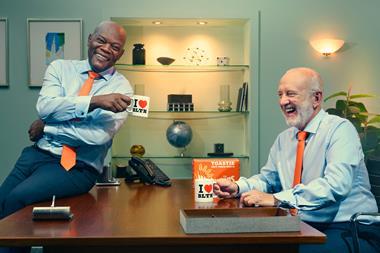
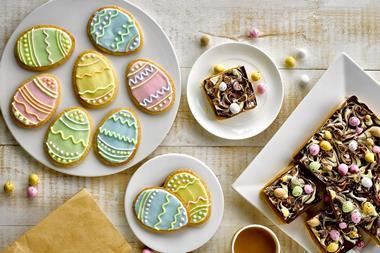
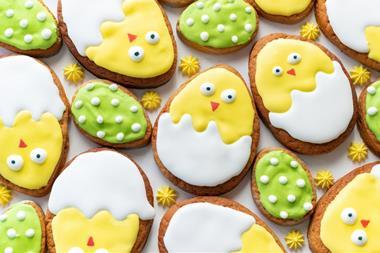
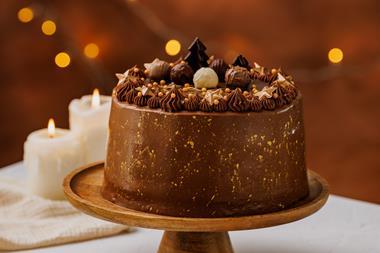
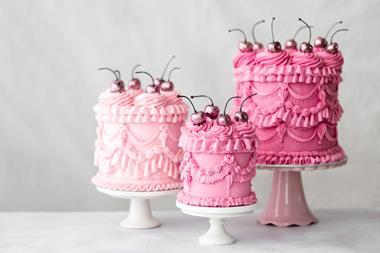


No comments yet